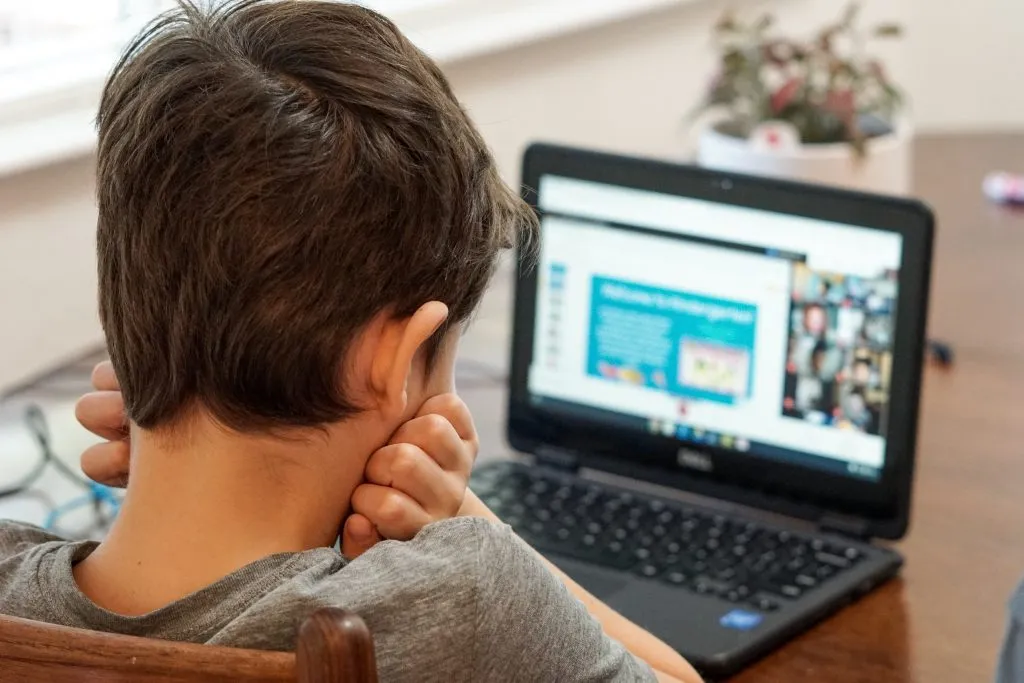Access to quality education is a fundamental right, yet remote and rural students often face steep barriers that hinder their learning opportunities. Limited access to schools, a shortage of qualified teachers, and underfunded resources have long been challenges for these communities. However, online schools are reshaping the educational landscape, bridging the gap for students regardless of geographical constraints.

This blog explores the critical role of online schools in supporting remote and rural students. We’ll examine the benefits they offer, the challenges they tackle, and the real-world impact on communities often left behind by traditional education systems.
Why Education Access is Critical for Remote and Rural Students
Education is the foundation for economic growth, workforce development, and social mobility. Yet, students in rural areas frequently lag behind their urban peers in terms of educational attainment. According to UNESCO, around 258 million children and youth globally are out of school, a significant proportion of whom reside in remote or underserved areas.

Traditional schools in these regions encounter unique challenges, such as long commutes for students, outdated facilities, and limited access to specialist teachers or advanced courses. Addressing these barriers is vital, not only for individual students but also to empower their communities to thrive.
How Online Schools Bridge the Gap
Online schools are a game-changer for students in remote and rural areas. By leveraging technology and the internet, they offer access to high-quality education that was once out of reach. Here’s how they make the difference:
1. Access to Qualified Educators
One of the biggest challenges rural schools face is a shortage of qualified teachers. Online schools eliminate the geographical constraints of teacher recruitment by making lessons delivered by experienced educators available digitally.
Example: Online platforms like K12 and Connections Academy employ certified teachers who provide instruction and support students throughout their academic journeys.
2. Flexible Learning Environments
Unlike traditional schools, online learning allows students to study on their own schedules. This flexibility is particularly advantageous for rural families who might need to balance education with agricultural work, family responsibilities, or other commitments.

- Students can learn at their own pace, revisiting lessons as needed.
- Parents can integrate learning into the family’s daily routine more fluidly.
3. Expanded Course Offerings
Local schools in rural areas often lack advanced courses, such as AP classes, STEM-focused programs, or extracurricular opportunities. Online schools open the door to thousands of course options, empowering students to explore specialties and prepare for competitive college paths.
Example: The Khan Academy is a widely acclaimed free resource, offering everything from basic math tutoring to prep courses for SATs and beyond.
4. Reduced Travel Time and Costs
For some students, getting to school involves hours of walking or expensive transport, especially in remote regions. Online education enables students to learn directly from their homes, drastically reducing the time and money spent on commuting. This convenience also improves attendance rates and ensures students can focus more on learning.
5. Promoting Lifelong Digital Skills
By participating in online education, students develop essential digital skills that prepare them for an increasingly tech-driven workforce. From navigating e-learning platforms to collaborating on virtual projects, rural learners gain the tools they need for future success in higher education and careers.

6. Personalized Learning Journeys
Modern online schools leverage AI and data analytics to create tailor-made educational experiences for students. These tools adjust to each student’s learning speed, strengths, and weaknesses, ensuring they gain a deeper understanding of the material.
Examples like DreamBox Learning or Edmentum use adaptive technology to meet every student where they are in their academic development.
Overcoming Challenges in Online Education for Rural Areas
While online schools offer promising solutions, they aren’t without challenges, particularly in rural contexts. Here are some obstacles—along with approaches to tackle them.
1. Limited Internet Connectivity
The digital divide is still a major barrier for rural education. Poor broadband access or no connectivity at all makes it difficult for students to participate in online learning.
Solution: Governments and organizations, such as UNESCO’s Global Education Coalition, are championing initiatives to improve rural internet infrastructure. Mobile learning apps that work offline can also bridge gaps in internet accessibility.
2. Digital Device Availability
Not all families in rural communities have access to laptops or tablets. Sharing devices among siblings or relying on a single smartphone can limit a student’s ability to engage fully in their studies.

Solution: Programs like the “ConnectEd” initiative by Apple and free tablet distribution programs from nonprofits like Worldreader help provide devices to underserved students for online learning.
3. Lack of Parental Support or Guidance
Many parents in rural areas may feel poorly equipped to guide their children through online education. This lack of confidence can prevent children from optimizing their learning experience.
Solution: Online schools can offer parent-orientation workshops and provide round-the-clock support to help families feel more confident in mentoring their students.
4. Maintaining Student Engagement
Without face-to-face interaction, it can be challenging to keep students motivated in an online setting. Social isolation further compounds this challenge.
Solution: Many online schools now integrate live classes, virtual group projects, and gamified learning experiences to boost student engagement and build a sense of community.
Success Stories: Real Impact of Online Schools in Rural Communities
Across the globe, online education has already made a difference in the lives of remote students.

Read More: The Ultimate Guide to the Advantages of a Memory Care Community
- India: The “EduBridge” initiative provides online vocational training to rural youth, enabling them to secure jobs in IT, retail, and other industries.
- Australia: The School of the Air program connects students in the Outback with educators through satellite technology, ensuring even the most geographically isolated learners receive quality education.
- United States: Programs like Montana Digital Academy offer online courses to students across the state, bridging geographic and financial barriers in rural districts.
These examples illustrate how online schools don’t just level the playing field—they push the boundaries of what’s possible in education.
What Does the Future Hold?
The growth of online schools is only expected to accelerate as technology improves and investments in rural education increase. Future advancements like enhanced virtual reality classrooms, AI tutoring programs, and expanding 5G connectivity will make high-quality online education even more accessible and engaging for rural communities.
At the same time, stakeholders—including governments, tech companies, and educators—must collaborate to ensure equitable implementation of these technologies and resources.

Read Also: Tartan High School and the Ann Bacon Reddit
Invest in Education for All Students
Online schools are not just an alternative—they’re a lifeline for countless students in remote and rural areas. By breaking down barriers, expanding access to quality education, and empowering learners with modern tools, these platforms have the potential to transform entire communities for generations to come.
If your organization or community is exploring ways to integrate online schooling, now is the time to take that first step. Together, we can make education accessible, inclusive, and impactful for all.
Conclusion
In conclusion, online schools play a pivotal role in bridging educational gaps for remote and rural students. By leveraging technology, these institutions provide access to quality learning opportunities that would otherwise be unavailable due to geographical and infrastructural limitations. The flexibility of online education allows students to tailor their learning experiences to fit individual needs, while the integration of innovative teaching methods fosters engagement and academic success. However, addressing challenges such as digital accessibility, internet connectivity, and personalized support remains essential to ensure equitable and effective education for all. With continued investment and adaptation, online schools can be a transformative force, empowering remote and rural students to achieve their full potential.
FAQs
How do online schools benefit students in remote and rural areas?
Online schools provide access to a wide range of courses, experienced educators, and learning resources that may not be available locally. They offer flexibility in scheduling, allowing students to learn at their own pace and often cater to specific interests or career paths.
What are the major challenges remote and rural students face in online learning?
Common challenges include limited internet connectivity, lack of reliable digital devices, and the absence of a conducive learning environment at home. Additionally, students may face isolation and require personalized support to stay engaged.
How do online schools address the issue of internet accessibility?
Many online schools are working to create offline learning options, provide downloadable content, and partner with community centers or libraries to offer internet access. Some also collaborate with governments and organizations to improve broadband infrastructure in underserved areas.
What resources do online schools provide to ensure effective learning for rural students?
Online schools often offer virtual classrooms, interactive learning tools, recorded lectures, one-on-one tutoring, and career counseling. They may also provide training for students and parents to navigate digital platforms effectively.
How can parents and guardians support rural students in online education?
Parents and guardians can support by creating a dedicated study space, ensuring access to necessary technology, monitoring progress, and encouraging communication with teachers. They can also foster a positive learning environment and help manage schedules to balance studies with other activities.







